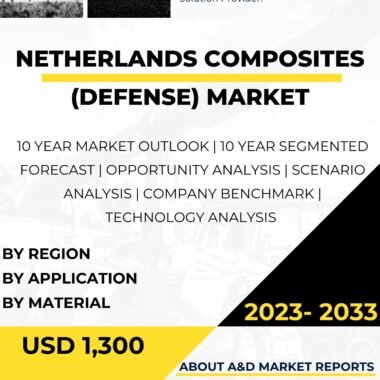Description
In the United States’ defense industry, armor materials play a crucial role in protecting military personnel, vehicles, and equipment from various threats encountered on the battlefield. These materials are designed to withstand ballistic, explosive, and chemical attacks, providing a vital layer of defense for the nation’s armed forces. Over the years, the development and implementation of advanced armor materials have significantly improved the survivability and operational capabilities of military assets. This article will explore the development, types, applications, and significance of defense armor materials in supporting the United States’ defense capabilities and ensuring the safety and effectiveness of its armed forces.
The development of defense armor materials has evolved alongside the evolution of military threats and technologies. In ancient times, armies used materials such as leather, wood, and metal plates as rudimentary armor to protect against enemy weapons.
With the advent of firearms and artillery, the need for more sophisticated and effective armor materials became apparent. During World War I, steel plating was widely used to reinforce military vehicles and provide some protection against small arms fire.
However, advancements in weapon technology during World War II necessitated the development of more specialized armor materials capable of withstanding larger and more powerful projectiles.
One of the most significant breakthroughs in defense armor materials came with the introduction of composite armor during the latter half of the 20th century.
Composite armor consists of multiple layers of different materials, such as ceramics, metals, and synthetic fibers, strategically arranged to maximize protection while minimizing weight.
The layering of different materials in composite armor distributes the energy from incoming projectiles, reducing their penetration and minimizing damage to the protected structure.
Moreover, composite armor offers the advantage of being more lightweight than traditional steel armor, allowing military vehicles and personnel to maintain agility and mobility on the battlefield.
Another significant advancement in defense armor materials is the use of reactive armor. Reactive armor is designed to counter the threat posed by shaped charge warheads, commonly found in anti-tank rockets and missiles.
When a shaped charge warhead impacts reactive armor, the armor’s explosive reactive elements react to the detonation, disrupting the shaped charge’s jet and reducing its penetrating power.
Reactive armor provides a vital layer of defense against anti-tank weapons and has become a standard feature on many modern armored fighting vehicles.
In recent years, there has been a growing emphasis on the development of advanced ceramics as defense armor materials.
Ceramic materials, such as boron carbide and alumina, exhibit exceptional hardness and are capable of absorbing and dissipating the energy from high-velocity projectiles.
When combined with other materials in composite armor systems, ceramics provide enhanced protection against armor-piercing projectiles and shrapnel.
Additionally, ceramic materials are relatively lightweight, making them well-suited for use in body armor and aircraft protection.
The significance of defense armor materials lies in their role in safeguarding military personnel and assets from a wide range of threats encountered in modern warfare.
Personal body armor, such as bulletproof vests and helmets, protects individual soldiers from small arms fire and shrapnel, enhancing their survivability on the battlefield.
Similarly, armored vehicles, aircraft, and naval vessels utilize advanced armor materials to protect against ballistic and explosive threats, allowing them to operate effectively in hostile environments.
Moreover, defense armor materials contribute to the survivability of military installations, such as command centers and ammunition depots, safeguarding critical assets from potential attacks.
The integration of advanced armor materials with military platforms and equipment also enhances their operational capabilities.
For example, armored vehicles with robust protection can conduct missions in high-threat areas, ensuring the safety of personnel and enhancing the effectiveness of ground operations.
Furthermore, the use of lightweight armor materials allows military aircraft to maintain high speeds and agility without compromising on protection.
The ongoing development and advancement of defense armor materials involve continuous research and investment in materials science, engineering, and testing.
The U.S. Department of Defense (DoD) collaborates with defense contractors, research institutions, and universities to enhance armor capabilities and address emerging threats and challenges.
Efforts are underway to develop armor materials with improved multi-threat protection, capable of countering a broader range of ballistic and explosive threats.
Moreover, research focuses on materials that can self-heal or repair damage caused by ballistic impacts, extending the lifespan of armor systems and reducing maintenance requirements.
Challenges in defense armor materials development include balancing protection, weight, and cost.
The incorporation of advanced materials often comes with higher manufacturing and production costs, necessitating careful cost-benefit analysis to ensure affordability without compromising protection.
Additionally, the trade-off between protection and weight is critical, as excessive armor weight can limit the mobility and range of military vehicles and aircraft.
To address this challenge, research focuses on lightweight composite materials that provide high levels of protection without excessive weight.
Furthermore, the use of innovative manufacturing techniques, such as additive manufacturing (3D printing), allows for the creation of complex armor geometries that optimize protection while reducing weight.
Another challenge is ensuring the compatibility and integration of advanced armor materials with existing and future military platforms.
New armor systems must be designed to fit seamlessly with the structure and systems of military vehicles, aircraft, and ships, ensuring that they do not impede operational capabilities or add unnecessary complexity.
In conclusion, defense armor materials are essential components that safeguard military personnel, vehicles, and equipment from a wide range of threats encountered in modern warfare.
The development of advanced composite armor and reactive armor has significantly enhanced the survivability and operational capabilities of military assets.
Moreover, the use of advanced ceramics as armor materials provides exceptional hardness and protection against armor-piercing projectiles and high-velocity impacts.
The integration of defense armor materials with military platforms enhances their protection and operational capabilities, allowing them to operate effectively in hostile environments.
As technology continues to advance, the DoD will continue to invest in research and development to enhance armor capabilities and address emerging challenges and threats, ensuring the United States’ continued military dominance and security.




